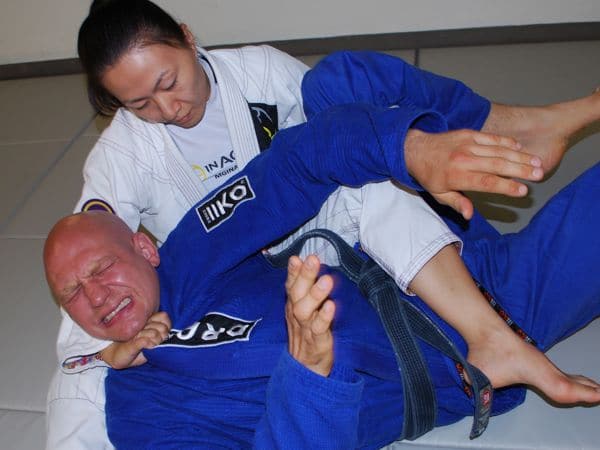
Back when I was mostly training in Judo I heard that there were some traditional dojos in Japan where tapping out to a choke was frowned upon – even in club sparring sessions you were supposed to fight the choke right to the bitter end, and your opponent would release the hold only AFTER you passed out.
I thought that this was pretty hardcore, and felt lucky that the Judo club I trained at wasn’t like that.
Towards the end of my Judo career, however, I came across something even more bizarre…
A Japanese collegiate Judo team on a North American tour came and trained at my club. Not only did these guys not tap out to chokes, they didn’t tap out to jointlocks either, at least until something in the joint had popped a few times. This was in PRACTICE, not competition. The irony is that most of these guys actually weren’t very good on the ground, and at the end of a training session a whole bunch of them would be sitting against the wall, nursing sore elbows.
I recently told this story to my BJJ coach, Marcus Soares. After he finished laughing and shaking his head, he told me that back in Brazil he’d done the exact opposite. If he had a submission locked in, and he was sure that could finish it, then he’d often stop that attack, release the grips and go on to hunt for another submission elsewhere.
Perhaps not coincidentally I’ve seen video of Marcelo Garcia, the best pound for pound grappler in the world, using this same ‘Catch and Release’ method in his training.
By loosening up your submissions before they are finalized you can study your opponent’s reactions and escape motions, and then work countering his counters to your initial attack.
This intelligent approach to training sure beats the meathead approach of putting your training partner out of commission for a few months until his arm heals up…
Finally, as I talked about in a previous tip, some submissions are just inherently more dangerous than others. Knowing how to train dangerous submissions is important: if you never, ever use them in sparring then you may develop a myopia towards them. Now you might not even recognize when people are setting them up on you, or know what to do if you’re caught in one.
Sometimes people even apply these submissions accidentally: they might not realize that a choke has turned into a neck crank, for example. Knowing a little bit about how to intentionally apply a neck crank will help you be aware of when you are doing them unintentionally, and also teach you how to defend against them better.
These were all considerations I had to weigh as I was writing the script for my High Percentage Leglocks DVD. I knew I wanted to show some safer yet still highly efficient material on that DVD, but I was concerned about revealing too much about the heel hook, on the off chance that someone would injure their training partner.
In the end I decided that I would be doing a disservice to the grappling community by not showing the heel hook, and included a lot of different methods to train these efficient and effective submissions safely.
So be like a fisherman, and occasionally practice Catch and Release. ESPECIALLY when it comes to the more dangerous submissions!



